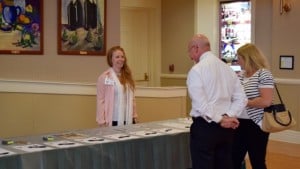Project Description:
The goal of our project was to partner with Misericordia Heart of Mercy and provide donations and service to help bring awareness and further contribute to their cause. Our team participated in two service events for Misericordia as well as raised donations and awareness through social media and online outlets. We hosted an event with a family-friendly movie for residents and the general public which also included other activities such as yoga, dancing, face-painting and a silent auction to generate monetary donations to Misericordia and also interact with and engage the community. Four of our team members also volunteered at the Greenhouse Inn for Sunday brunch at Misericordia’s campus restaurant. Our group maximized online donations through the implementation of social media outlets such as Facebook, Twitter, Instagram, and LinkedIn. This social media exposure and personal networks brought significant online donations through our FirstGiving.com page as well as provided valuable awareness to the work done at Misericordia.
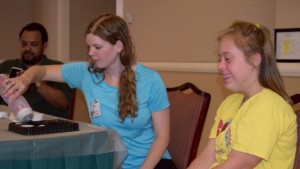
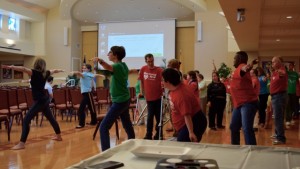
Charity Information:
Misericordia is a Chicago-based not-for-profit corporation serving persons with developmental disabilities. Misericordia serves more than 600 people through a wide variety of programs. The Mission Statement of Misericordia is to “support individuals with developmental disabilities in maximizing their level of independence and self-determination within an environment that fosters spirituality, dignity, respect and enhancement of quality of life. We promote development of natural family and community support, community awareness, education and advocacy.” Misericordia offers a continuum of care based on the needs of the individual. They also offer peace of mind to the families of residents since they know their loved one is cared for in a way that will enhance their life. Donations allow Misericordia to offer more than just room and board for residents and offer them exceptional programs, such as intervention by physical therapists, occupational therapists and speech therapists.
Success Metrics:
Goal #1: Generate $3,000.00 in revenue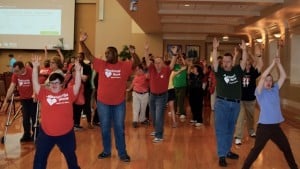
Our group was able to produce $2,795.00 in revenue and we reached 93% of our intended goal. This was amazing as approximately 70% of our revenue was generated entirely online through our personal/corporate networks and social media outreach. Through many in-kind donations and resources we were able to minimize expenses to $30 and the entire remaining balance will be donated to Misericordia.
Goal #2: Provide 48 hours of service
Our group was able to produce 58 hours of service to Misericordia through two service events. The first service event had a family-friendly movie for residents and the general public which also included other activities such as yoga, dancing, face-painting and a silent auction. At this event we had approximately 60 attendants including 45 Misericordia residents. Four of our team members also volunteered at the Greenhouse Inn for Sunday brunch at Misericordia’s campus restaurant.

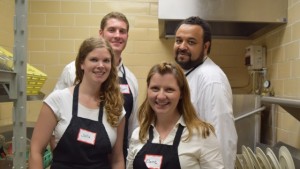
Goal #3: Have a social media reach through 4,000 impressions
Our group was able to produce over 175,000 impressions! Our original objective was to produce 750 likes and 3,000 reach on Facebook, 25 retweets on Twitter, 25 hearts on Instagram, and 10 snaps on Snapchat or approximately 4,000 impressions. By combining all of our social media exposure through the listed social media outlets, including LinkedIn, our group was able to far exceed our original goal by producing over 175,000 impressions. Each impression provides awareness and recognition for the valuable work Misericordia does.
Advice for Future Teams:
- Defining individual responsibilities and workflows is key. By having individual ownership, everyone was held accountable and felt that their contributions were part of a collective goal.
- Decide on a goal or mission and stick to it. It is imperative to have a clear and attainable scope for your project. Scope creep can be easily overlooked and before you know it you have a completely different project.
- Have an online presence. With the various conflicts people have whether it be family, other classes, work, etc it is very difficult to get everyone in one physical location. Our group utilized Google Docs and Google Hangouts to make sure that more people are able to participate no matter where. In addition, our group took advantage of online donations as part of our online presence.
Lessons Learned:
- Having a team mission is critical. By understanding what it is your team wants to accomplish makes other decisions much easier. For example, when venue conflicts arose our team knew that the involvement and engagement of Misericordia residents was more important and this ultimately prevented us from changing venues.
- Continue to monitor risk and make any updates for new risks that may occur. With so many variables in the field project it is important to have contingency plans. Having an effective risk management plan allows for your team to be proactive in dealing with future issues and have a proper response to overcome the issue.
- Utilize an effective communication strategy. There are many applications groups can use to make communication easier such as the app Slack. Setting some rules of communication and having a proper way of communicating allows for the group to work together more effectively. In addition, this will help eliminate some redundancies in communication such as email overload.

